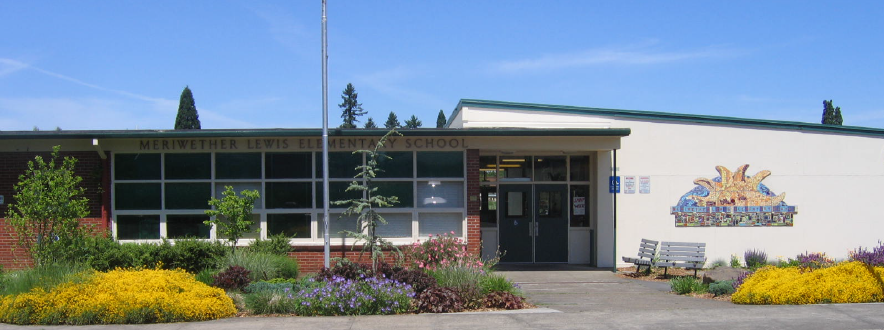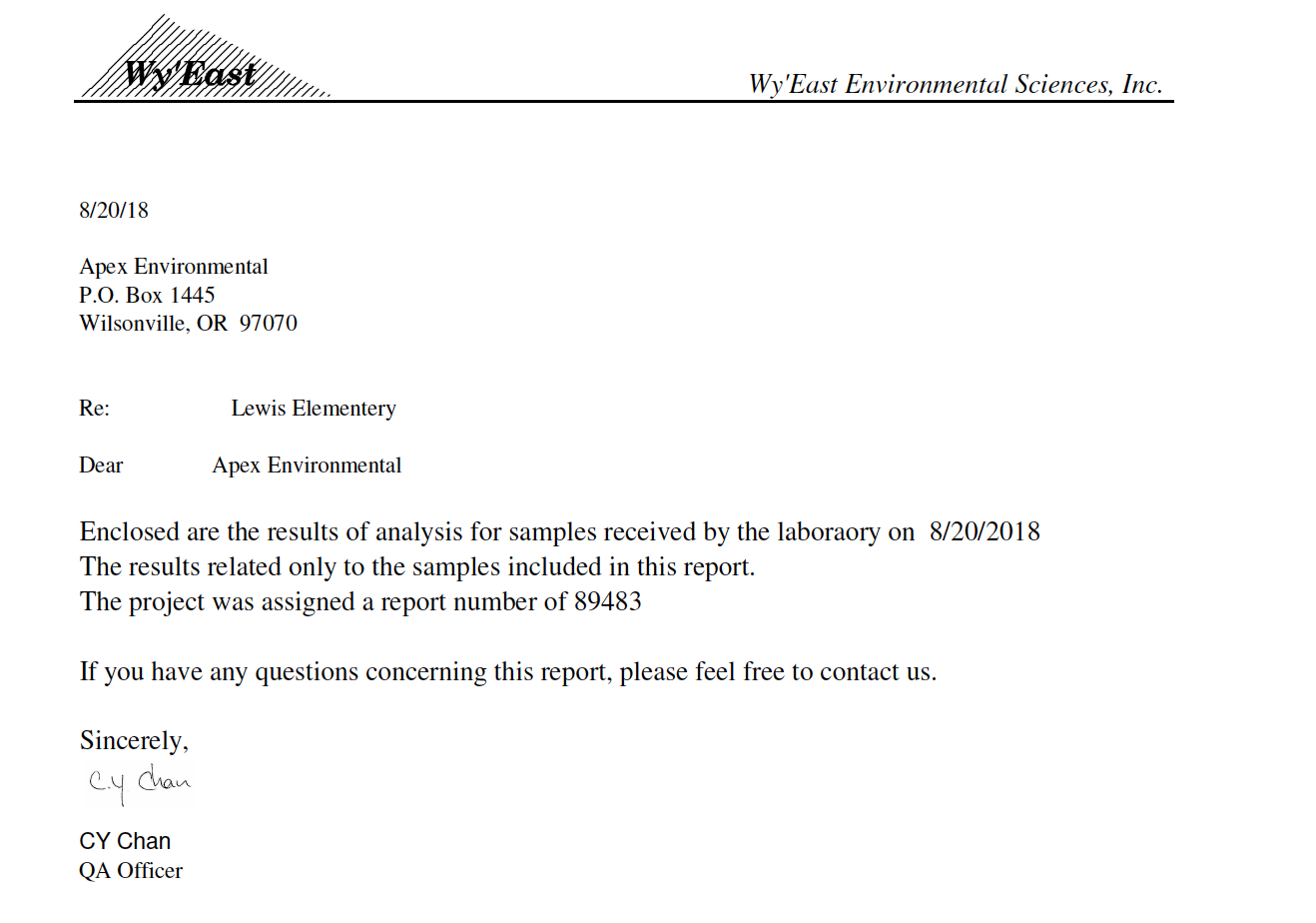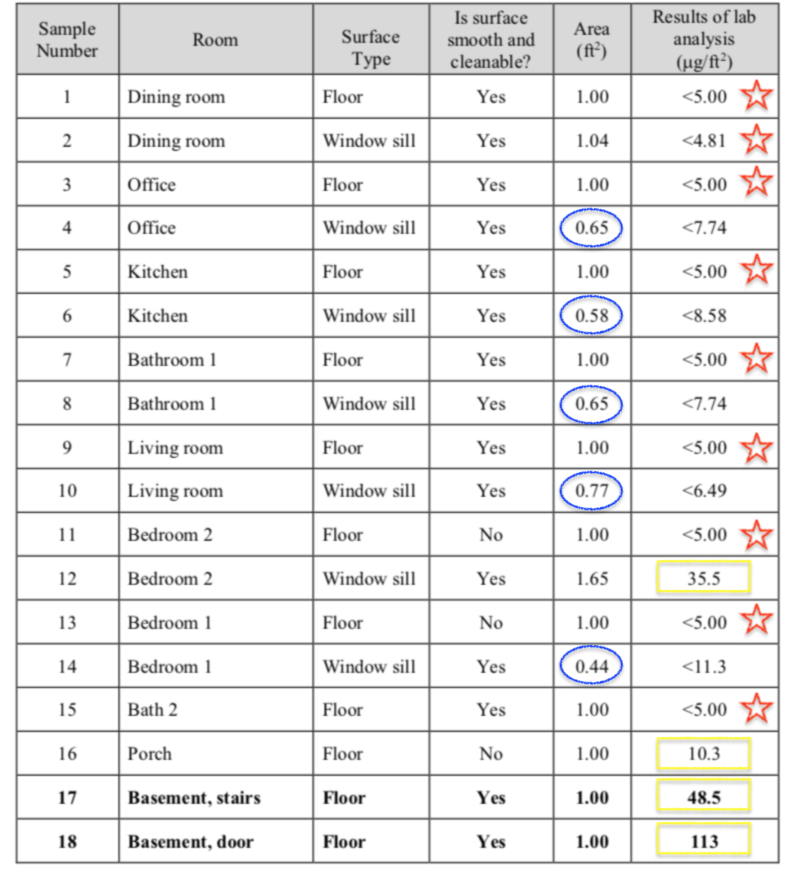Portland Public Schools is simply NOT using the strictest standards nor best practices to protect your children from lead in schools: A series — Part 1: Post Lead-remediation construction dust found at Lewis Elementary School
For those new to the Lead Safe Mama website:
Tamara Rubin is a multiple-federal-award-winning independent advocate for childhood Lead poisoning prevention and consumer goods safety, and a documentary filmmaker. She is also a mother of Lead-poisoned children (two of her four sons were acutely Lead-poisoned in 2005).
- Tamara owns and runs Lead Safe Mama, LLC — a unique community collaborative woman-owned small business for childhood Lead poisoning prevention and consumer goods safety.
- Since 2009, Tamara has been conducting XRF testing (a scientific testing method) using the exact instrumentation employed by the U.S. Consumer Product Safety Commission to test consumer goods for toxicants (specifically heavy metals — including Lead, Cadmium, Mercury, Antimony, and Arsenic).
- Since July of 2022, the work of Lead Safe Mama, LLC has been responsible for 5 product recalls (FDA and CPSC).
- All test results reported on this website are science-based, accurate, and replicable.
- Recent notable press… There has been too much to mention already in 2024! Please check out our press page to see some of the amazing coverage of our work so far this year!
For this article I will be using the example of Lewis Elementary School in SE Portland — a school my children used to attend.
Portland Public Schools is simply NOT using the strictest standards nor best practices to protect children from Lead in schools: A series — Part 1: Dust
I was recently contacted by several individuals expressing a concern for Lead dust in schools following the recent renovations (over the summer) at Lewis Elementary School, a Portland Public Schools (PPS) facility.
Concerns expressed by members of the Lewis Elementary School community include the following:
- There appeared to be improper containment used in the renovation — protective plastic sheeting was observed to not be fully secured over school equipment and supplies were left in the classroom during the renovation.
- Construction dust was observed in areas of the school that were not protected by containment — specifically, dust was observed in the library on books and on book shelves.
- The school required that staff return to school last week, Tuesday (8/21/2018) to prepare for the school year (some even returned the week before).
- The Lewis Community was told that clearance testing results for Lead dust (for testing ostensibly done the week before) would not be available until Friday of this past week (August 24).
- The date on the minimal (insufficient/ limited) testing completed shows the samples were actually collected on August 20, 2018, which contradicts what the school district told the community.
- The district stating (as I was told by the parties that contacted me) that they would be making clearance test results available on the Friday prior to school starting (set for tomorrow, Monday August 27) did not give any time for action or reaction by the school community — nor did it factor in time for the school to respond to the clearance testing results in the event that the clearance test results were deemed to be unacceptable/insufficient or otherwise not passing clearance. (Professionals who work in this arena know that time always needs to be built into a bid for additional post-remediation clearance testing in the event that preliminary clearance tests come back at levels that are considered unsafe, so there can be additional cleaning and a secon round, sometimes a third, of clearance testing to confirm a site is safe for children.)
- The limited scope of the clearance testing that was done (with the report provided to the community just a few days ago — at the end of last week), and the (incomplete, yet already sufficiently problematic) results are in fact unacceptable, and need to be redone (detailed below) to determine if the space is actually safe for children. Yet, in the absence of such confirmation of safety, children are expected to return to school tomorrow (Monday 8/27/18) anyway.
Before I get into the meat of the analysis — and the takeaway — I wanted to make sure my readers have access to the actual clearance test report (dated August 20, 2018) to review for context in this issue. The image below is the cover note for the clearance test report. Please click on the image of the cover note for the “full” three-page PDF of the clearance test report.
NOTE: Only seven dust wipe samples were taken for the entire school.
Here is a graphic representation showing the problems with the above linked test results:
Here is a narrative explanation of the central problems with this “clearance test” for Apex Environmental by Wy’East, and their relevance to the above concerns:
- The dust-wipe sample testing performed is insufficient for the size of the school; to ensure a school is safe for children, the entire school needs to be tested — not just the kindergarten rooms. In a structure that is generally 1000 to 2000 sq. ft. in size (like a standard single-family-dwelling) one, can usually expect a minimum of 10 to 20 dust wipe samples before a determination can be made regarding the safety for children to return. This number of test samples of course would need to scaled up much further given the square footage of this school. One would expect at least 100 (one hundred) dust wipe samples for a school of this size to make any safety determination (to determine whether the school “passed clearance” and is safe for children to return to school tomorrow). Seven (7) samples being taken is not only insufficient, but irresponsible.
- The consideration that “only areas where children under 6 spend most of their time need to be tested for Lead dust hazards” is an outdated and repudiated notion (popularized by its use by HUD for determining what [limited] federal assistance funding can/should be allocated to remediate if hazards in low income housing are found). To be truly protective of children’s health, ALL areas obviously need to be tested, as children of any age can be poisoned (and it just takes a literally *microscopic* amount of Lead dust to poison a child). Failing to test common areas (library, halls, etc.) as well as the classrooms is a gross oversight — putting children at risk as well, especially in light of the concern brought up by observers for limited containment of the work in this particular remediation job. (My understanding is that the project was also called in for at least one OSHA violation this summer, compounding the concern for dust hazards in the school — specifically, if the contractor was not following protocol to protect adult workers‘ health then they were definitely not following standards that would protect young children’s health in the space.)
- In all of my years of Lead poisoning prevention advocacy, I have never that I can recall seen a clearance test for Lead dust hazards that had levels in the 28 to 31 micrograms per sq. ft. as the threshold for testing. This is ridiculous in 2018 — modern versions of these clearance tests usually have low thresholds for testing set at either FIVE micrograms per square foot or 10 micrograms per square foot!
- All of the current research (even going back 20+ years) has shown that in order for Lead-in-dust levels to be protective of children’s health they need to be at least “below 10 Micrograms Per Square Foot”(see references below) — and top scientists who have done this research have recommend that the level be ideally “below 5 Micrograms Per Square Foot.”
- For a dust wipe sample in a clearance test to have a low threshold that varies (as this one does) is also very unusual. The low threshold of detection for one particular clearance test is generally consistent throughout a report. I have not personally seen (nor heard of) another report where the low threshold VARIES; this is ridiculous in my opinion. (Perhaps a clue can be found in that this conveniently enables each test result to “fall below” the variable low threshold.)
- While the current federal/state standard for safety for children is that Lead levels fall below 40 micrograms of Lead in dust per square foot, the scientific consensus is that it should be below TEN micrograms per square foot (a revision that has been repeatedly proposed over the years — these recommendations were made 10 years ago and more based on advancements in the science [back then!]). This new standard has already been implemented by HUD, is in the pipeline to be implemented as the new standards by both the EPA and the State of Oregon, and although they have not yet been universally legally mandated yet, they are widely known, understood, and should be adhered to as *best practices* in protecting our children (see links below).
- GRANTED: It is possible that the levels at the school are consistently below 10 micrograms per sq. ft. — but the scope and accuracy of the testing that has been completed to date in no way establishes that (nor is suggestive that) this is the case.
Please click this image to see what appropriate clearance test results should look like when dust wipe samples are taken.
#FirstDoNoHarm
Conclusion: The Portland Public School district has an unfortunate history of systemically consistently failing to use best practices and the latest science to protect children attending their schools from environmental toxicity.
PPS administrators also have a history of hiding toxicity issues behind public statements that are (seemingly intentionally) vague and confusing to try to reassure those who are unaware of the specifics of the science behind these concerns.
In my opinion (as a Lead activist with more than a decade of experience in this area [specifically extensive education, training and expertise — and nearly 13 years reading and interpreting and understanding dust wipe sample tests, clearance tests and hazard assessments]), children (children of any age) should not return to Lewis Elementary School until the school has passed a thorough independent clearance testing (of ALL ROOMS AND AREAS), using the strictest standards currently used across the country — with testing done to a detection limit of low threshold of FIVE (5) micrograms of Lead in dust per square foot, and the school not being considered safe for use by children unless the dust wipe samples come in at levels at least BELOW 10 micrograms of Lead in dust per square foot.
Note: I would be happy to provide — on a volunteer basis — a review of any final clearance tests and other questions and considerations in this matter.
In this and any similar case, children should not return to school (or to their home in the case of a similar home inspection) until the facility has passed a thorough independent third-party clearance test (using current best practices and standards).
The clearance test results that have been provided constitute neither thorough testing (it is woefully insufficient for PPS to only have had seven dust wipe samples done on an entire school), nor is it following best and strictest standards that are known by both the scientific community and our government agencies (the State of Oregon and the U.S. EPA) to be protective of children’s health.
Solutions:
- Test the entire school with methodology across the board that measures down to a consistent low threshold of at most 10 micrograms of Lead in dust per square foot.
- Make the report available to parents immediately upon conclusion of testing so that they can choose whether to send their children to school if levels come in at 10 micrograms per square foot or higher.
(Note: I expect push back from the school district in publishing this piece. My legal team has some concern that it may have actually been program administrators with PPS who initiated the “anonymous complaint” in an attempt to shut down my advocacy back in 2016, in an effort to keep me out of this conversation for the school district. My team currently has people looking into this to determine if this was in fact the case.)
As always, please let me know if you have any questions.
Tamara Rubin
#LeadSafeMama
Mother of four sons who have attended PPS schools
In support of these concerns, I provide the following article, links, studies, legislation and policy around this issue:
- https://www.epa.gov/sites/production/files/2015-10/documents/epa_lead_standards_petition_final.pdf
- https://www.epa.gov/assessing-and-managing-chemicals-under-tsca/tsca-section-21-petition-requesting-epa-lower-lead-dust
- https://www.ncbi.nlm.nih.gov/pubmed/19337524
- http://nchh.org/who-we-are/nchh-publications/articles/
- http://nchh.org/2008/09/epa-lead-dust-standards-inadequately-protect-children-nchh-finds/
- https://www.gpo.gov/fdsys/pkg/FR-2001-01-05/pdf/01-84.pdfhttps://www.epa.gov/lead/hazard-standards-lead-paint-dust-and-soil-tsca-section-403
Never Miss an Important Article Again!
Join our Email List












